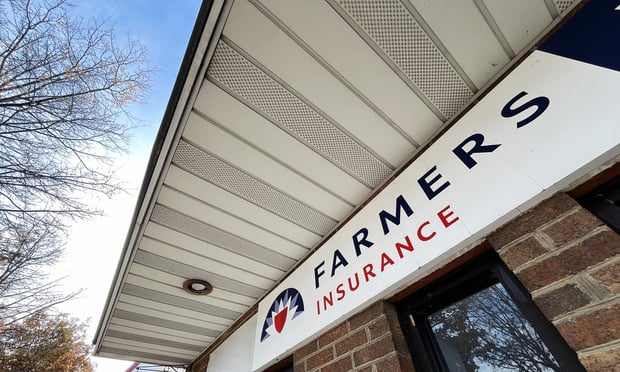(Bloomberg) -- The Atlantic should produce a near-normal 12 storms during the six-month hurricane season that officially begins Wednesday, while the U.S. coastline has a below-average chance of being struck by a major system, according to Colorado State University’s forecast.
Of the 12 storms, five could become hurricanes and two could grow into major systems of Category 3 or stronger, said Phil Klotzbach, lead author of the closely watched seasonal outlook. The U.S. has a 50% chance of being struck by a major hurricane, just below the 20th century average of 52%.
“As is the case with all hurricane seasons, coastal residents are reminded that it only takes one hurricane making landfall to make it an active season for them,” Klotzbach wrote in his forecast. “They should prepare the same for every season, regardless how much activity is predicted. ”
In an average year, 12 systems of tropical storm strength or greater form from June 1 through Nov. 30. Already this year, Hurricane Alex formed in January and Tropical Storm Bonnie struck the coast of South Carolina last week.
Klotzbach said his prediction doesn’t include those two, so 2016 could end up with 14 in total. A weakening El Niño in the Pacific Ocean could make conditions in the Atlantic more conducive for tropical storms and hurricanes.
|Storms’ cost
Atlantic hurricanes can exact a high toll in human life, cause billions of dollars in property damage and roil energy and agriculture markets.
About 5% of the U.S. marketed natural gas production comes from the Gulf of Mexico, along with 17% of crude oil, Energy Information Administration data show. The Gulf region also is home to more than 45% of petroleum refining capacity and 51% of gas processing.
Florida, a frequent target of storms, is the world’s second-largest orange-juice producer, behind Brazil. More than 6.6 million homes with an estimated reconstruction cost of $1.5 trillion lie in vulnerable areas along the Atlantic and Gulf coasts, according to the Insurance Information Institute in New York.
|El Niño
Among the weather changes wrought by El Niño is a greater chance of wind shear across the Atlantic that can tear storms apart. If the Pacific phenomenon fades, wind shear in the Atlantic will also drop away.
However, water temperatures in the far northern Atlantic, as well as in the sub-tropical areas of the northeastern part of the basin, are cooler than normal, Klotzbach said. This could indicate a larger shift in what is known as the Atlantic Multidecadal Oscillation, or AMO, to a cooler phase.
The Atlantic tends to produce fewer storms when the AMO is in its cooler phase, which can last for 20 to 40 years. The ocean shifted to its warm phase in 1995 and most of the hurricane seasons since then have produced more than the average of 12 storms a year; 2005 spawned a record 28 storms.
|Wilma’s record
Among those storms was Katrina, which wrecked New Orleans and the central Gulf Coast, and Wilma, the last major hurricane, with winds of 111 miles (179 kilometers) per hour or more, to hit the U.S. The nearly 11 years since Wilma is the longest the country has gone without being struck by a major system.
Last week, the National Oceanic and Atmospheric Administration also predicted the Atlantic would have a near-normal season, for the same reasons cited by Klotzbach. NOAA called for 10 to 16 named storms, with four to eight becoming hurricanes and one to four becoming major systems. There were 11 named storms last year and eight in 2014.
In April, Klotzbach also called for 12 storms, five hurricanes and two major systems. That forecast was released just days before the death of Klotzbach’s mentor, William Gray, the originator of tropical seasonal outlooks.
“He promised me when I saw him a few days before his death that I would give him at least 50 more years of seasonal forecasts,” Klotzbach wrote in the current outlook. “I will do my best to continue his legacy and produce seasonal Atlantic hurricane forecasts for as long as I can.”
Copyright 2018 Bloomberg. All rights reserved. This material may not be published, broadcast, rewritten, or redistributed.
Want to continue reading?
Become a Free PropertyCasualty360 Digital Reader
Your access to unlimited PropertyCasualty360 content isn’t changing.
Once you are an ALM digital member, you’ll receive:
- Breaking insurance news and analysis, on-site and via our newsletters and custom alerts
- Weekly Insurance Speak podcast featuring exclusive interviews with industry leaders
- Educational webcasts, white papers, and ebooks from industry thought leaders
- Critical converage of the employee benefits and financial advisory markets on our other ALM sites, BenefitsPRO and ThinkAdvisor
Already have an account? Sign In Now
© 2024 ALM Global, LLC, All Rights Reserved. Request academic re-use from www.copyright.com. All other uses, submit a request to [email protected]. For more information visit Asset & Logo Licensing.








